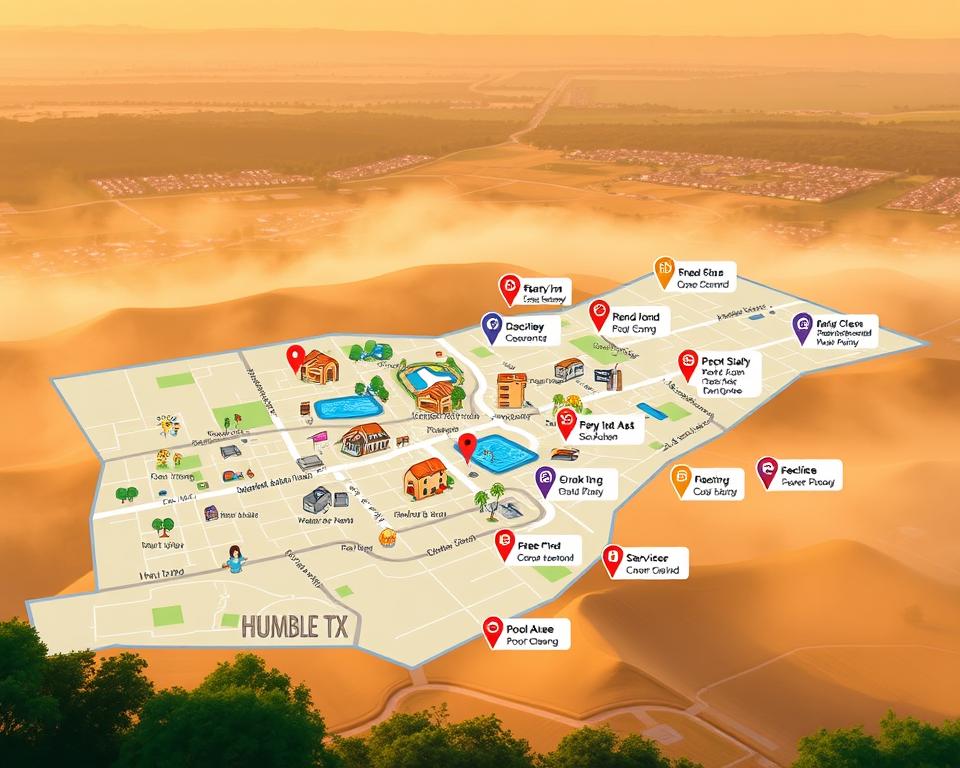Pool Cleaning in Humble, TX – Reliable Pool Maintenance Services
Quick stat around seven in ten of homeowners who use a weekly plan experience reduced equipment issues and improved water clarity within the first few weeks.
Silver Arrow 6 Pools is your local team that keeps ownership easy for households in the Humble area. We build schedules around your calendar and needs, so pool builders Humble Tx aligns with your week.
Our weekly services cover balanced treatment, minerals, equipment checks, and routine upkeep, with assured chemistry and an dedicated technician who provides a written service summary after each visit.
From skimming and brushing to accurate testing and friendly guidance, we prioritize consistent communication and ongoing familiarity. That delivers quick responses, a smooth onboarding, and the peace of mind that your backyard centerpiece gets professional care every visit.
- Silver Arrow 6 Pools offers consistent weekly service fit to your routine.
- Every visit provides testing, treatment, and a detailed maintenance report.
- An dedicated technician provides continuity and transparent updates.
- Water treatment is backed to defend users and equipment.
- Knowledge of local conditions ensures the approach fits Humble-area conditions.
Silver Arrow 6 Pools: Trusted Local Experts for a Clean and Clear Swimming Pool
Count on Silver Arrow 6 Pools for steady, professional attention that works with your time and your yard.
As a trusted service company in the area, Silver Arrow 6 Pools manages residential and commercial weekly routes across Humble. Our dedicated techs use a standardized checklist and leave a clear maintenance report at every visit.

A trusted local service company
We are familiar with local water and weather patterns, so our expert team adjusts chemistry to keep your swimming pool crystal clear. This approachable team handles every visit with care and respect for your home.
Tailored residential and commercial care
Options fit compact backyards, larger estates, community amenities, and apartment facilities. Our local services residents value include scheduled testing, surface attention, and prompt updates so maintenance stays simple.
| Plan Type | Visit Frequency | Dedicated Tech | Report |
|---|---|---|---|
| Residential route | Once per week | Provided | Visit summary & notes |
| Community and commercial | Once weekly | Yes | Regulatory checklist |
| Seasonal services | On demand | Yes | Scope & recommendations |
Why Choose Our Pool Cleaning and Maintenance in Humble
Our team provides steady, skilled attention so your family can enjoy safe, clean water without extra hassle. We combine industry-grade products with straightforward reporting to keep things uncomplicated for your home.
We use professional chemicals and minerals on every visit to make sure water remains balanced and swimmer-friendly. That assurance means we fix water balance and stand behind the result.
Weekly assigned technician and maintenance report
An assigned technician gets to know your system and delivers a clear written report every week. You receive detailed notes on tests, treatments, and next steps so you always know what was done.
Flexible options to fit your needs and schedule
Opt for Full Service, partial plans, or hybrid options where we take on the core tasks and you handle the extras. Our approach to pool maintenance emphasizes prevention and regular inspections to prevent expensive repairs.
| Included Item | Visit Frequency | Assurance | Remarks |
|---|---|---|---|
| Chemistry & minerals | Every visit | Guaranteed balanced water | Enhances comfort and equipment longevity |
| Dedicated technician | Weekly | Consistent technician | Written report and follow-ups |
| Flexible plans | Per need | Service options available | Aligned to how you use the pool |
We value your feedback and reviews to keep improving our service. Expect clear communication, reliable scheduling, and reduced surprises so you can enjoy your backyard with less effort.
Pool Cleaning in Humble, TX Options That Fit Your Life
Flexible service plans make it easy to keep your backyard ready for guests without additional effort.
Full Service: Netting, vacuuming, water treatment, and equipment checks
Opt for Full Service for comprehensive cleaning that covers netting and vacuuming, water treatment with pro-grade chemicals and minerals, and routine equipment inspections. Our technicians use a step-by-step checklist so your system runs smoothly and remains guest-ready.
Partial Service: We balance and check, you handle basics
Partial Service is a smart cleaning service when you take on basic netting and vacuuming. We manage testing, balancing, and essentials so your water stays clean and swimmer-safe.
Spa add-ons plus seasonal care for peak months
Bundle spa service to keep spa and pool aligned. Seasonal tune-ups get your system ready for heavy traffic in peak swimming months and ease the transition afterward.
“Our friendly team reviews your options, recommends a plan, and adjusts service as your needs change.”
We tailor services to your needs so you pay only for what helps your backyard shine. Count on dependable care that frees up time while we keep your water looking great and systems operating smoothly.
Our Weekly Service Process: Clear, Consistent, Every Week
We use a clear, repeatable method each week to keep equipment operating and surfaces looking their best.
Complete testing with a tailored treatment plan
We start each visit with precise testing to map current chemistry. That data guides a tailored treatment plan for your water that week.
Surface work and filter care every visit
Your designated tech completes skimming, brushing, and vacuuming per your chosen plan. Filter care is included to help the system move water efficiently between visits.
Proactive equipment checks to head off issues
Technicians examine pumps, valves, and heaters to identify early wear. Rapid fixes or guidance save you time and avoid costly repairs down the road.
- Visit starts with testing and ends with a clear maintenance report.
- All work is documented: readings, chemistry added, tasks done.
- Service is adjusted seasonally to maintain stability.
- Consistency produces steady results and extra free time.
Pricing Factors, Plans, and Transparent Quotes
Review clear options and get a fast estimate that matches your calendar and budget.
Monthly rates change by size, unique features, and how much yard debris reaches your water. We evaluate pool size, whether you have an attached spa, and nearby trees or shrubs to build accurate expectations.
Size, spa add-on, and surrounding vegetation
More surface area or a spa requires extra time and supplies. Landscaped yards with heavy leaf drop require more attention for clarity. We factor these elements into every quote so there are clear expectations.
How often we visit, equipment condition, and features
How often we visit and the condition of your equipment influence pricing. Water features, waterfalls, and unique finishes also affect the time required.
Request a quick, friendly Humble quote
Silver Arrow 6 Pools delivers friendly, rapid quotes with easy plan choices. Both plans include cleaning, maintenance, chemicals and minerals, guaranteed chemistry, and an allocated tech who delivers a written report.
- Clear pricing using size, spa, and debris factors.
- Plan comparison shows what each option includes so you can decide.
- Quick answers and a zero-pressure quote.
Service Areas in and around Humble, TX
From single-family yards to community facilities, we operate weekly routes that prioritize punctual service and steady results.
We proudly serve neighborhoods across the area, delivering reliable care to each home.
Humble neighborhoods we serve
- Bala Woods, Canyon Village, Cypresswood Lake, Kings Forest, Lakewood.
- Lexington Woods; Lexington Woods North; Mill Creek; North Hill Estates; Northgate Crossing.
- Ramblewood, Spring Park Village, Timber Lane, and Villages of Spring Oaks.
Reliable routes and on-time technicians throughout the area
Our technicians plan efficient routes so visits honor your time and occur in a predictable weekly window.
Whether it’s a residence or a multi-resident facility, our company applies the same professional standards and friendly communication.
Local knowledge lets us anticipate debris and weather factors on water quality. If your neighborhood isn’t listed, reach out and we’ll check availability or the most convenient route.
Repairs, Parts, and Equipment Support Done Right
When equipment is noisy or losing flow, a thorough inspection quickly identifies the cause.
Our experienced technicians check equipment each visit so issues are caught early. That means fewer surprises and quicker repairs for pumps, filters, heaters, and automatic cleaners.
Diagnostics by experts for pumps, filters, heaters, cleaners
Our team executes focused tests to pinpoint problems and recommend the right repairs. Straightforward results let you choose between a minor tune-up or a more involved repair quickly.
Quality parts and products to keep your pool performing
We source matching parts and durable products to return equipment to proper performance and prevent repeat failures. Work is scheduled to minimize downtime and keep your yard usable.
- Accurate diagnosis prevents needless part swaps and repairs.
- Techs explain options clearly and outline costs.
- Simple tweaks and tips can improve flow and efficiency.
- Every repair is documented so you know what happened and why.
Next Steps
Get dependable weekly attention so your water stays sparkling and your time is freed up.
Silver Arrow 6 Pools welcomes you to request a quick quote and easy next steps. Our service company provides weekly service that can include chemicals, minerals, equipment checks, and a weekly written report.
We adapt plans to your home, busy months, and backyard use. Rely on friendly technicians who handle the work, answer your questions, and leave clear notes about pool water performance and maintenance needs.
Want your pool prepared for warm months? Reach out today to set up the first visit and experience how easy pool cleaning and service can be.









